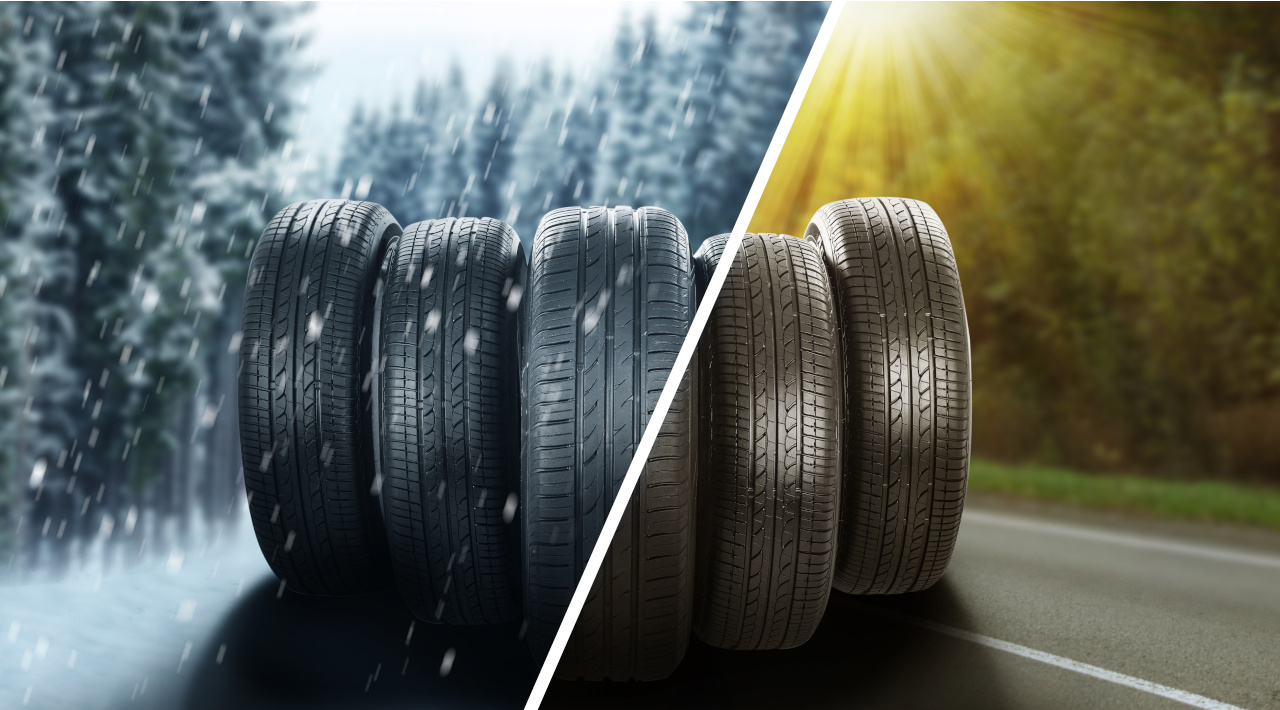If you are unsure about the difference between Winter and Summer tyres, read on to find out more about needing to switch your vehicle’s tyres as the seasons change.

In simple terms, Winter tyres are designed for safe driving in temperatures below 7˚C. As the temperature drops, road surfaces can become treacherous with snow and ice and Winter tyres provide added protection in wintry conditions. Winter tyres have a distinctive tread pattern to aid traction and are made of a more flexible material to make sure they are soft enough to maintain their grip on the road surface when it is cold.
Summer tyres are designed to be used during the warmer months in temperatures up to 40˚C and are made from a stiff compound that provides excellent grip on dry and wet surfaces. Summer tyres are designed to operate optimally at temperatures above 7˚C and improve vehicle stability when cornering or applying the brake.
All-season tyres combine the benefits of Summer and Winter tyres and can be used throughout the year. All-season tyres can help aid safety when driving in temperatures between -10˚C and 30˚C.
You should switch from Summer to Winter tyres once the temperature consistently drops below 7˚C. If you think you are only experiencing a short cold snap, it may be wiser to wait for the temperature to become more stable.
Once the mercury rises again at the end of the Winter, it is time to switch back to summer tyres. It is worth remembering that Winter tyres are not suitable for driving on hot roads. If you leave them on your vehicle all year round, the flexible tread that keeps you safe during wintry weather will wear down more quickly as the summer comes around. Winter tyres in the Summer will also mean you consume more fuel and increase your CO2 emissions.
If you are planning to switch tyres during the year, we recommend storing the unused tyres in a cool, ventilated, dry and clean environment indoors; if they are left outside, they risk drying out, which may result in cracks and damage to the tread. Your tyres should also be kept away from any chemical substances or things that could pierce the rubber.
Before removing your tyres, note which wheel they belong to; this will help you rotate your tyres to promote even wear. Inspect your tyres for any damage, clean and dry them well, and remove any debris or stones trapped in the grooves.
We understand that the cost of maintaining your vehicle or fleet can be difficult to predict and time consuming to manage. By adding a Leasys Maintenance Package at the start of your leasing agreement you can enjoy the convenience of comprehensive vehicle maintenance and tyre replacement for only a small, fixed cost directly added onto your monthly rental amount.
Contact Leasys today to find out about our maintenance packages and ask one of our experienced customer care advisers to help tailor-make the perfect lease for you.